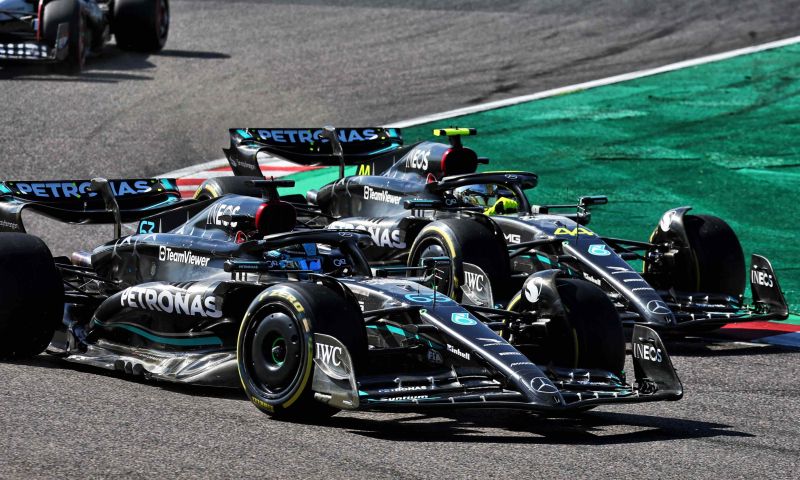F1 News

Mercedes explains team orders Russell: 'We had to protect Lewis'
- Sam Godber
Mercedes team members watched with bated breath the duel between Lewis Hamilton and George Russell at the Japanese Grand Prix. Bradley Lord, acting alongside Jerome d'Ambrosio as stand-in for team boss Toto Wolff, shared his views on the fight between the teammates and explained the decision to have them swap positions.
Mercedes saw fierce battle between Hamilton and Russell
Hamilton and Russell clashed several times on the Suzuka Circuit, with the latter being pushed off the track by the seven-time world champion at one point. While Russell was still complaining about his teammate's behaviour during the race, Hamilton was critical of Russell after the Japanese GP.
Both drivers drove with a different strategy: Hamilton went for a two-stopper, Russell tried a one-stopper. In the closing stages of the race, Russell was told to let his teammate pass, a team order that Toto Wolff appeared to have instructed remotely.
On the mutual battle on the track, the team had nothing against it, Lord explained. "They race each other hard on a hard-racing track. It’s easy to read a lot into those radio messages in the heat of the moment. As always, we talk about it away from the pressure and the high temperatures of the cockpit in the debrief after."
Mercedes explains team orders
Lord said the decision to have the drivers switch positions was taken because Russell's one-stop strategy was not working. "It didn’t quite work out ultimately but it was worth a gamble," stated Wolff's deputy.
Trackside engineering director Andrew Shovlin agrees with his colleague's words. "At the end of the race, the odds of George holding back Sainz were relatively small because his one-stop strategy left the Ferrari with a sizeable tyre advantage. The reason that we committed to that strategy though was that we had very little to lose," he explained.
"He had no threat behind Sainz; it was a difficult strategy to pull off and he did a good job. Ultimately though, the tyre degradation was too high to make it work. Given this, we had to protect Lewis from losing the position to Sainz, as he was the more likely car to finish ahead, and therefore gave the instruction to invert the cars on track."

